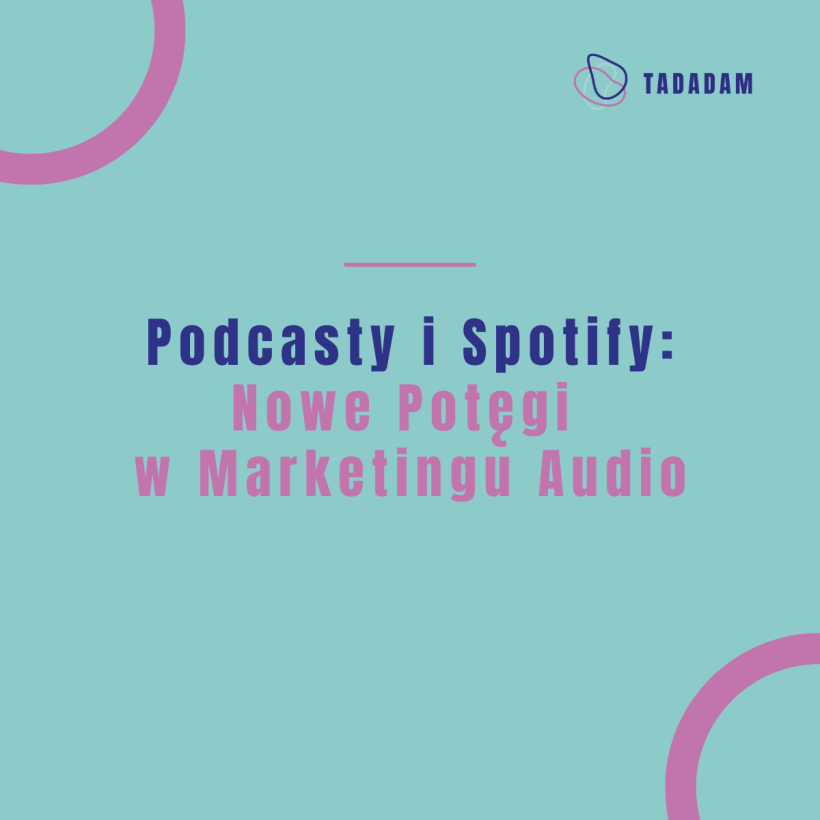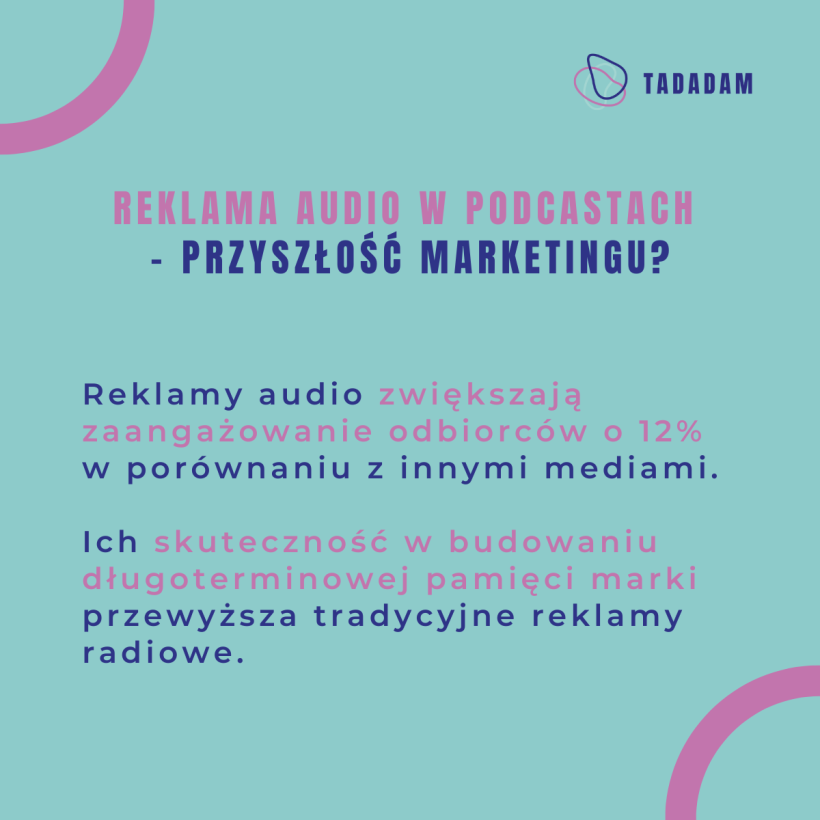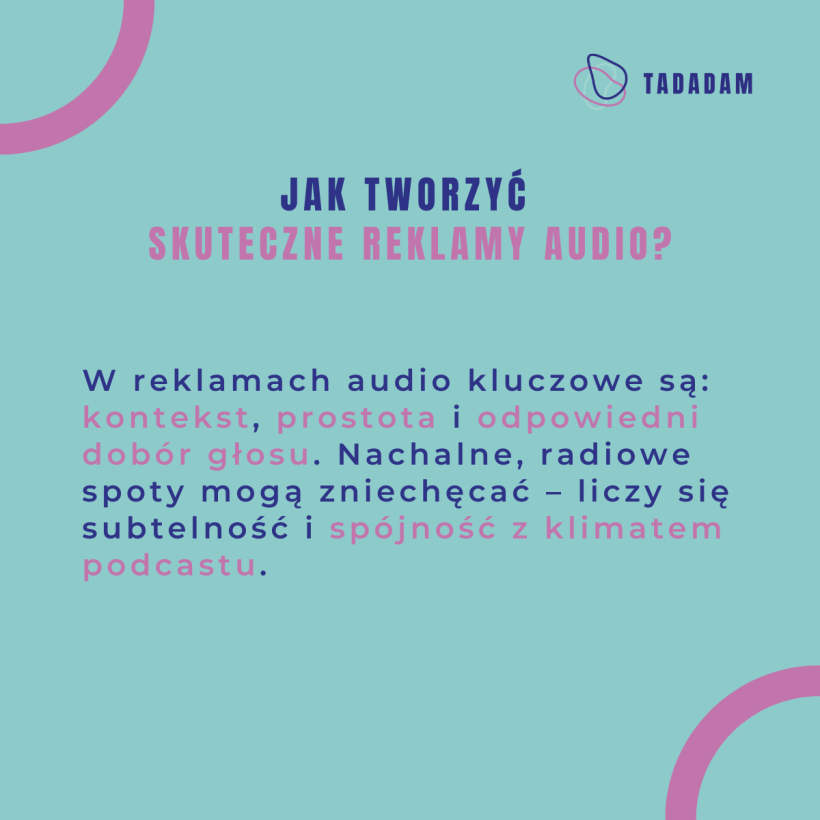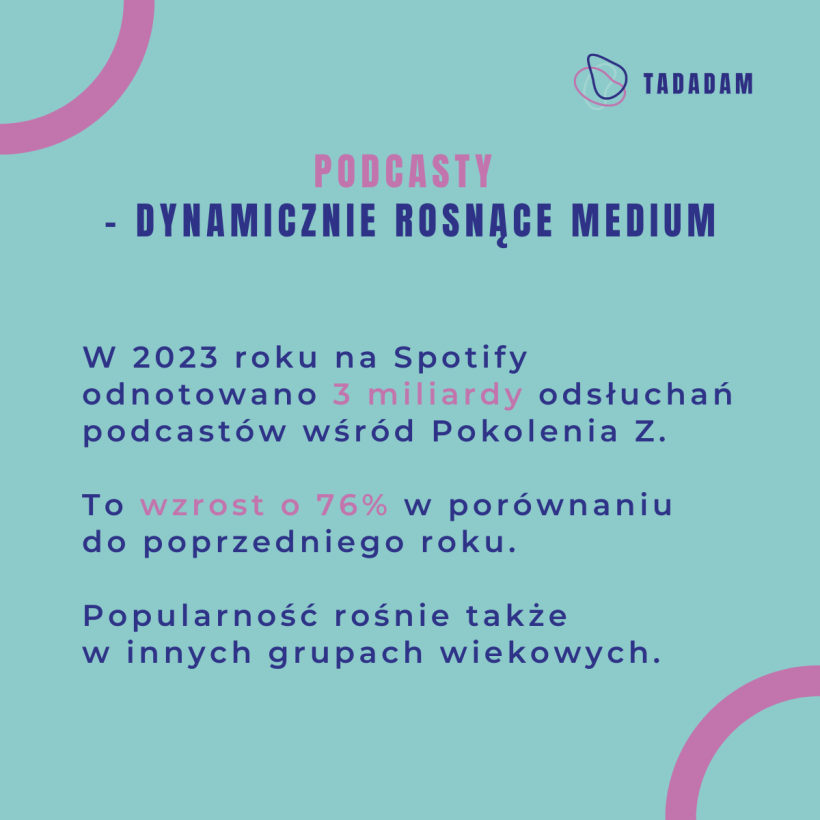In recent years, podcasts have surged in popularity at a rate that is hard to ignore. According to Spotify's report (Culture Next: Gen Z Trends 2023), in the first half of 2023, Gen Z users on Spotify listened to an astounding three billion podcast episodes. This represents a 76% increase compared to the entire previous year. A significant increase was also noted among all other age groups.
Research by NPR and Edison Research indicates that both the number of listeners and the time spent consuming spoken content have reached an all-time high. A domestic report titled "Podcasts 2023 WPROST X Studio Plac" confirms these trends, noting that almost two-thirds of Polish internet users declare that they listen to podcasts, with nearly a third doing so at least once a week. We most often listen via Spotify, the global streaming giant, which has ten million users in Poland and over five hundred million globally.
These data leave no doubt: the podcast universe is becoming an important medium for marketing strategy.
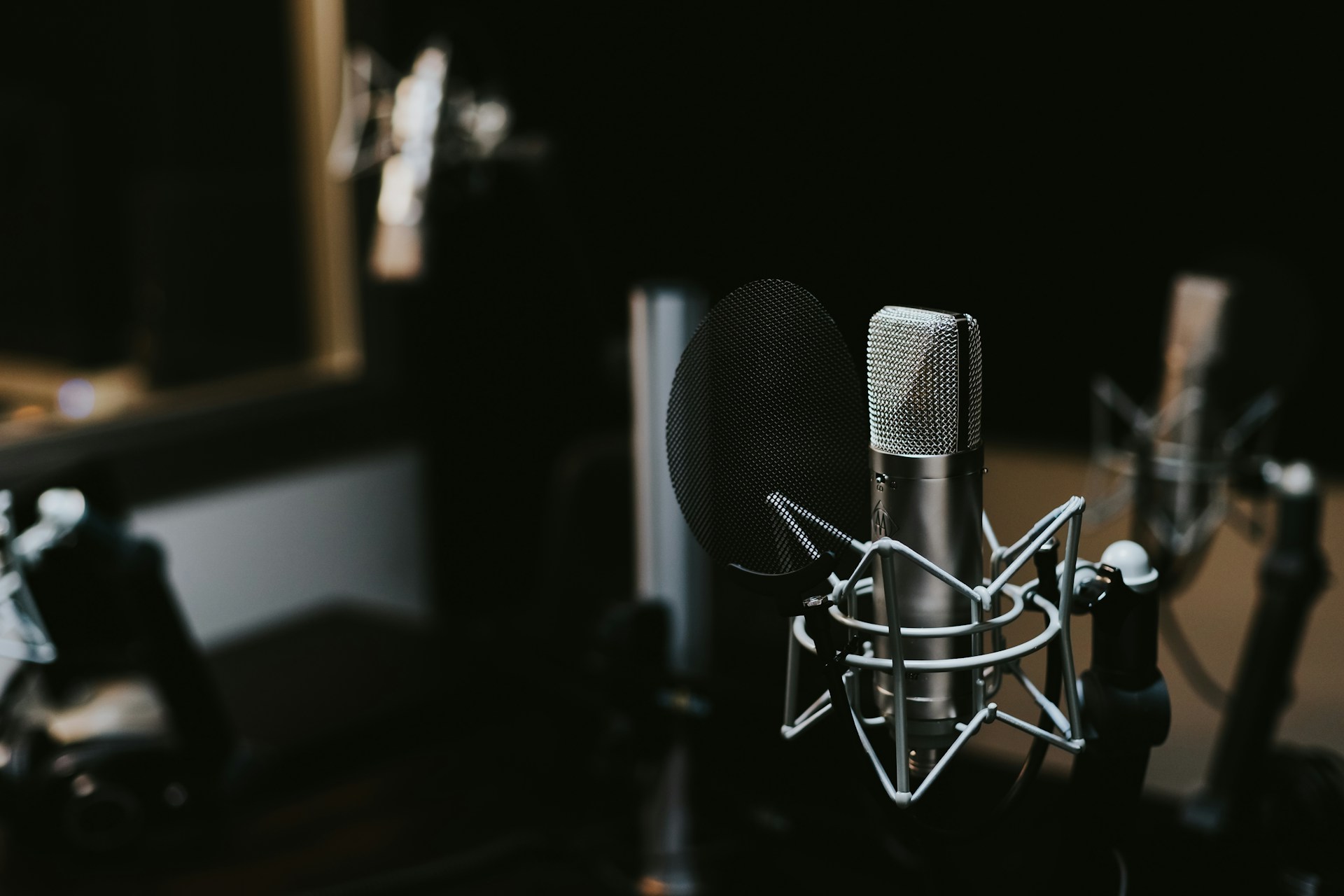
The power of audio advertising in podcasts
Marketing activities around podcasts can be conducted in various ways—collaborations with creators and the production of branded series are one approach. However, another increasingly common format is running ad spots within popular creators' podcasts.
Audio ads are not just a trend; they are an effective marketing tool, gaining momentum along with the growing popularity of streaming services. Technologies such as Dynamic Ad Insertion (DAI) allow for delivering personalized ad content in real-time, significantly boosting campaign effectiveness.
The WPP Mindshare Neurolab and Spotify Sonic Science study found that audio ads significantly increase engagement compared to other media formats. The increase in emotional intensity triggered by audio ads was 12% higher than the global benchmarks for all media, correlating with increased brand distinctiveness in its category. Interestingly, audio advertising has a 49% greater impact on long-term memory compared to radio (AM/FM) ads, as shown by the Neuro Insight Study and Pandora Conversion Experiment.
Can we dare to claim that audio advertising is currently the most engaging medium? Although marketers seem yet to fully realize this, the latest findings certainly support this idea.
How to create a good audio ad?
An audio ad is similar to a radio spot. Those who don't feel the subtle difference between the two can burn through considerable amounts of money, as Spotify campaigns are not cheap. If you’re a podcast listener, you'd probably agree that an ad straight out of a radio station would trigger an instant response—switching off, skipping, or muting. A conventional, loud, content-heavy creation is like an uninvited guest in an environment we engage with in intimate situations, often with headphones on.
A good audio ad on a streaming platform should be contextual and not overloaded with content. Add a brand’s audio logo, and you have a formula for effectively leveraging sound’s potential. The choice of voice, immersive sound effects, and music is also key to the creation of an ad. While there are several challenges, skillfully addressing them can significantly elevate the quality of the final spot, resulting in better outcomes for the advertising campaign.
Musical strategy in audio advertising
Music plays a crucial role in creating emotional associations with a brand. Well-chosen music enhances the consumer experience and acts like a "fast-forward button" for understanding. It’s no coincidence that Harley Davidson uses strong guitar riffs, while Pampers opts for gentle, positive melodies. Music serves as a trigger that shapes the brand image on multiple levels.
Therefore, selecting music with strategic objectives in mind can be vital for the success of marketing activities.
What is a musical strategy? It’s a supplement to branding that defines the sonic sphere of communication. Specific musical qualities are assigned to the archetypes or emotional attributes of a brand. As a result, all brand assets featuring sound should emotionally guide the consumer in the desired direction, as outlined in the strategy. Consistently implementing this strategy builds brand consistency in the sound layer, much like standardizing colors and typography in visual branding. Music consultants and tools, such as AI-powered testers that analyze a track's alignment with the brand’s sonic strategy, assist in executing the strategy.
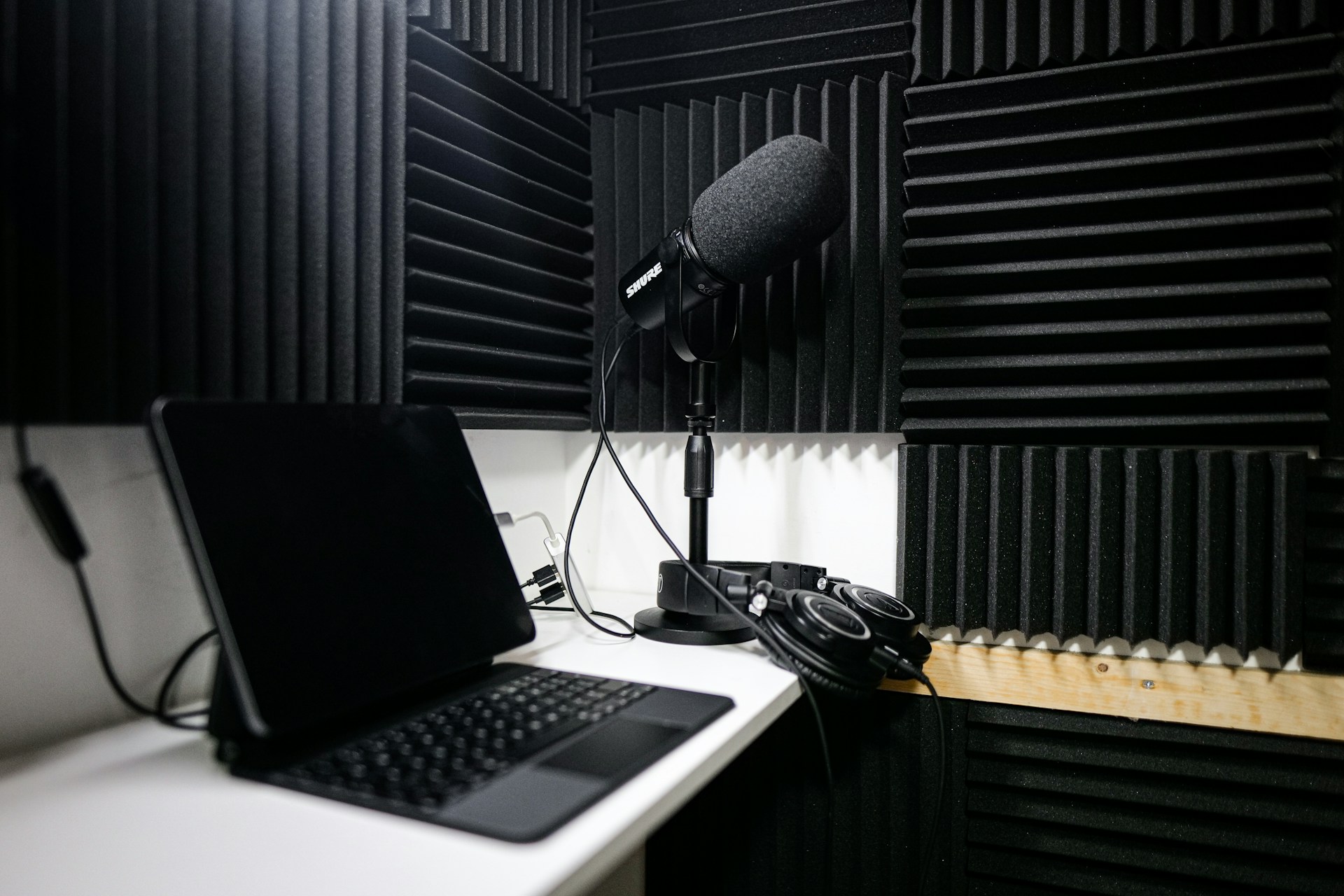
Still low competition - an oportunity to stand out
In Poland, the market for audio advertising in podcasts is still relatively non-competitive. This is a great time to invest in this channel and stand out from the competition. The relatively high cost of media buying on Spotify can be off-putting, yet this also makes the platform more competitive. It's worth remembering that the cost of producing an audio spot is much lower than, for example, a video spot, which will be reflected in the total investment cost.
Alternatively, some audio ads are aired directly by podcast creators. Sponsored episodes or entire series provide a good opportunity to interact with the host, which, given the high level of trust listeners place in them, is very beneficial for the brand.
In Poland, a positive example is the "WojewódzkiKędzierski" podcast, in which brands like Haier, Wedel, and Play run audio ads, and the hosts mention them within the context of their conversations. Interestingly, of the three mentioned, only Play uses its own audio logo and brand voice. The other brands appear with the audio background and voice standardized by the podcast creators. What a missed opportunity!
What does the future hold for audio advertising?
Spotify is already testing context-based targeting based on transcription and introducing the possibility of changing podcast host voices to other languages. This is a true revolution that will allow brands to reach an even wider audience.
Don’t wait—start investing in your brand's sonic image. A carefully designed sound system will benefit you not only on Spotify; the number of touchpoints where sound plays a role is constantly growing, and leaving this aspect to chance is a recipe for chaos and underutilization of a powerful medium.
TADADAM specializes in the strategic use of sound in marketing, offering the creation of audio ads tailored to the individual needs and character of your brand. Contact us to learn how we can build the sonic identity of your brand together. Let's start by creating an outstanding audio ad!
Authors:
Hubert Pyrgies
Aleksandra Chróst
_________________
Sources:
https://ads.spotify.com/en-US/culture-next/gen-z-trends-report/
https://www.adweek.com/partner-articles/audio-wins-over-every-major-channel-out-there/
https://studioplac.com/2023/06/06/raport-podcasty-2023/
https://www.wpp.com/en/wpp-iq/2023/09/engagement-and-emotions-are-triggered-by-audio
https://unsplash.com/photos/a-laptop-computer-sitting-on-top-of-a-white-desk-kDKXL4fnvI4


